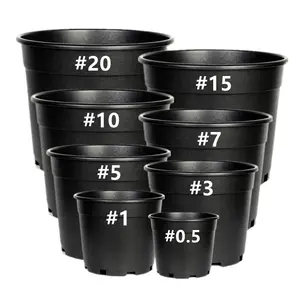Introduction to Types of Plastic Buckets
Plastic buckets are versatile and indispensable tools in various industries and households. They come in a myriad of shapes, sizes, and types, serving different purposes depending on the materials used and the intended application. Understanding the different types of plastic buckets can help you choose the right one for your needs, whether for construction, cleaning, or even gardening. This guide explores the various categories of plastic buckets, their features, and their key advantages.
Types of Plastic Buckets
When it comes to plastic buckets, there are several types designed for specific tasks. Here are some popular types:
- Standard Utility Buckets: Commonly used in homes and workplaces for household chores like cleaning and storage.
- Food-Grade Buckets: Designed for safe food storage, these buckets are made from materials that are compliant with food safety standards.
- Heavy-Duty Buckets: Constructed from thicker plastic, ideal for industrial use. They can handle denser materials, making them perfect for construction or waste disposal.
- Bucket with Lid: These buckets often come with a sealing lid, preventing spills and contamination, suitable for paint storage or food preservation.
Applications of Plastic Buckets
Plastic buckets have an array of applications across different fields. Here's how they are commonly used:
- Household Cleaning: Essential for mopping, washing floors, or carrying cleaning supplies.
- Gardening: Used for transporting soil, plants, and various gardening tools.
- Food Industry: Employed for food storage and preparation, especially in restaurants and catering services.
- Construction Sites: Ideal for mixing materials, carrying tools, or disposing of waste.
Features of Plastic Buckets
Plastic buckets come with a range of features that enhance their functionality and usability. These include:
- Durability: Made from robust materials that resist cracking and breaking, allowing for long-term use.
- Lightweight: Easy to transport and handle, making them user-friendly for various tasks.
- Stackable Design: Many plastic buckets are designed to stack on top of each other, saving space during storage.
- Variety of Sizes: Available in multiple sizes—from small containers for painting to large buckets for industrial applications, catering to diverse needs.
Advantages of Using Plastic Buckets
Choosing plastic buckets offers a plethora of advantages, making them a popular choice across industries:
- Cost-Effective: Generally cheaper than metal or wooden alternatives, providing great value for money.
- Corrosion Resistant: Unlike metal buckets, plastic buckets don't corrode or rust, extending their lifespan.
- Easy to Clean: Suitable for cleaning and sanitizing, retaining hygiene standards, especially in food-related environments.
- Non-Reactive: Food-grade plastic buckets are non-reactive, ensuring that the stored contents are safe from contamination.








































